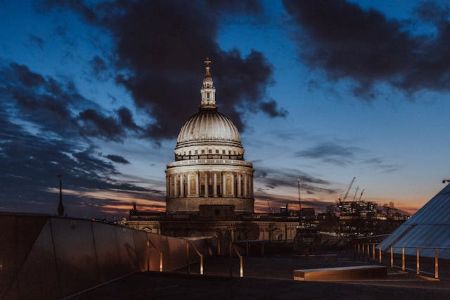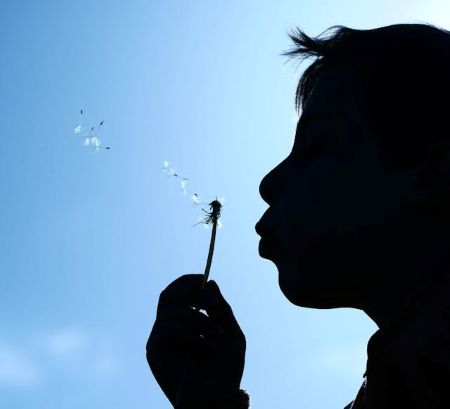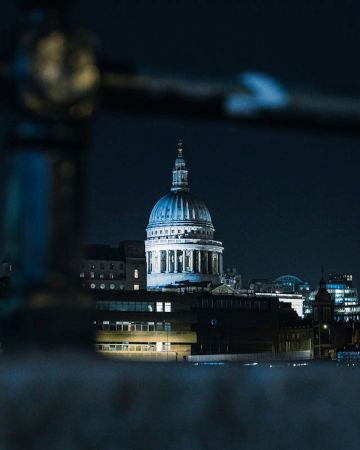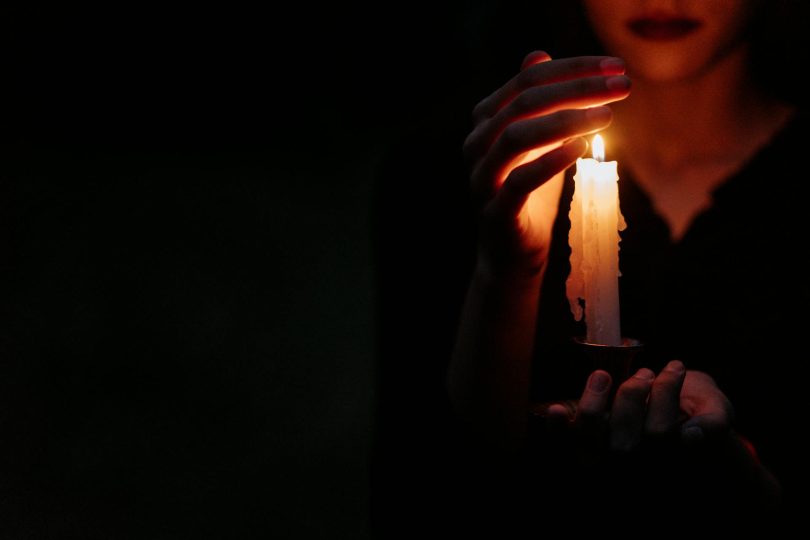I feel ruffled. If I were an owl, my feathers would be puffed up and wild, frowning intently at January. 2025 did not start gently. I feel discombobulated, adrift, as if all my usual reference points have changed.

The external world feels more unkind, more spiky, akin to an annoyed porcupine bristling with rage.
I found myself unexpectedly in the City of London with a little time to spare. Wandering into St Pauls Cathedral, I planned to light a candle for a friend. Once inside, stood in the aisle and looking up towards the dome, I felt spacious, quiet and calm.

I took a long, restful breath, and let out the tension I had been holding across my neck and shoulders. I felt my feathers begin to settle…
Heeding the call to quiet, I decided to stay for Evensong.
The invite broadcast across the cathedral, inviting us to Evensong encouraged us to come in, rest our weary souls, enjoy the beauty of the space, and to soak in the choir singing the day’s choice of psalms.
As I sat listening to the readings with the glorious voices of the choir washing over me, I let myself sink into the magnificent music.

For a moment, I was suspended in the harmonies of the voices and felt my worry beads quieten. And I realised it had been a while since I had consciously contemplated my own weary soul.
I felt soothed.
My impulse moment yielded balm for my soul and ruffled feathers.
Soul’s solace.
In the quiet that followed, I practised three-part breathing, inhaling nourishment and exhaling release. For the first time in a while, my neck and shoulders relaxed, and I felt my stresses suspend.
…Peace…
I invite you to seek out the places and spaces where you may also find solace for the soul.

The places you seek may be closer than you think; here are six modalities you may wish to explore to find your path towards soul’s solace:
- Movement
- Music
- Nature and trees
- Contemplation or daydreaming
- Meditation or prayer
- Breathe!

Rhythmic movement can be a powerful release. You may rhythm in running outside in the fresh air, feeling your feet hit the ground, finding flow in synching breath and steps. You may feel moved to dance to the beat, with wild abandon behind closed curtains, or together with friends. The pulse of the boat as the oars hit the water and propel your boat forward, whether solo, in a pair, or even an eight, can be a powerful stroke you feel deep in your bones.
Music has been a gateway to release throughout human history. Who hasn’t felt the booming rumble of drums resonate through your body? Within us is the memory of a song, or a piece of music that speaks to our hearts and moves us deeply. Faure’s Requiem rarely fails to bring tears to my eyes, whereas Queen’s We Will Rock You always makes me feel vibrant and alive.
Spending time in nature is a regular habit of mine. You may laugh, but there is something wonderfully soothing about a long ramble in nature and even hugging a tree!

The lost art of contemplation or daydreaming seems revolutionary in a world that prioritises action over reflection. And yet, if our greatest artists and creators had not spent time communing deeply with their creativity, then humanity’s greatest creations might not have come to be. Many of Michelangelo’s artworks, including the Sistine Chapel were years in the making, and it is said that Leonardo da Vinci spent sixteen years perfecting his Mona Lisa. Unlike the patrons of old, modern patrons would probably withdraw funding after five years without a product!
Meditation and prayer, whether you view them as the same or different modes of being, are pathways to inner peace. Practice leads to a quietening of the mind, leading attention inwards into the depths of our own quiet.
Breath is the fastest way to shift state. The state of your breath reflects the state of your mind. When mind races with worry and anxiety, so does breath become strained. I am a huge fan of sandbag breathing, a passive way to surrender to breath. I often do mine in viparita karani, lying on the floor, resting the base of my spine on a bolster and resting the backs of my legs on the sofa, as I listen to music or read (obviously, simply resting or listening to something is more conducive to rest!). Over the course of around 25 minutes, the breath shifts and becomes freer and more relaxed. As breath calms, so does mind.

Sandbag breathing: always check with a medical practitioner if you have any issues that cause pain or difficulty first! If you don’t have a breath pillow or sandbag, find a 3-5kg weight such as a bag of beans, rice or even a large text book to rest on your navel, keeping your lower ribs and hips clear. Lie in savasana or equivalent restful pose and allow the passive resistance of your diaphragm to the weight simply shift your state.
Three-part breathing: dirga pranayama is best conducted sitting upright with a straight spine. Breathe in through your nose, and sip in breath, first into your belly, then rib cage, and upper chest. If you can, hold your breath for a beat or two after you complete your inhale. Exhale your breath effortlessly, releasing down from your upper chest, rib cage, and finally belly. Repeat until you feel more easeful.

As you become more fluent with dirga pranayama, you may wish to add an intention as you inhale and exhale, so you have an awareness as you breathe.
I left St Paul’s Cathedral that evening, feeling restful and calm, at peace with my soul. The feathers of my inner owl were soothed and relaxed.

May you find connection & solace for your soul, as you seek out your own sources of peace.
Main – Photo by cottonbro studio



